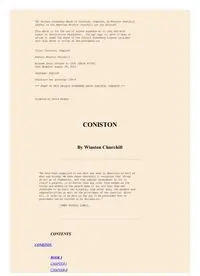
RVC Open access repository – COPYRIGHT NOTICE PDF
Preview RVC Open access repository – COPYRIGHT NOTICE
RVC OPEN ACCESS REPOSITORY – COPYRIGHT NOTICE This is the author’s accepted manuscript of the following article: Brown, C. A., Elliott, J., Schmiedt, C. W. and Brown, S. A. (2016) 'Chronic Kidney Disease in Aged Cats: Clinical Features, Morphology, and Proposed Pathogeneses', Veterinary Pathology, 53(2), 309-326. The final publication is available at SAGE Journals via http://dx.doi.org/10.1177/0300985815622975. The full details of the published version of the article are as follows: TITLE: Chronic Kidney Disease in Aged Cats: Clinical Features, Morphology, and Proposed Pathogeneses AUTHORS: Brown, C. A., Elliott, J., Schmiedt, C. W. and Brown, S. A. JOURNAL TITLE: Veterinary Pathology PUBLICATION DATE: March 2016 VOLUME/ISSUE: 53/2 PUBLISHER: SAGE Publications DOI: 10.1177/0300985815622975 Veterinary Pathology Chronic kidney disease in aged cats: Clinical features, morphology, and proposed pathogeneses Journal: Veterinary Pathology F Manuscript ID VET-15-RP-0201.R2 o Manuscript Type: Review Papers r Date Submitted by the Author: 2 3-Nov-2015 Complete List of Authors: Brown, Cathy; University of Georgia, Athens Diagnostic Lab P Elliott, Jonathan; Royal Veterinary College, Veterinary Basic Sciences Schmiedt, Chad; University of Georgia College of Veterinary Medicine, e Small Animal Medicine and Surgery Brown, Scott; University of Georgia, Small Animal Medicine and Surgery e and Physiology and Pharmacology r Aging, cats, chron ic kidney disease, Fibrosis, Proteinuria, Renal Keywords: Insufficiency, Interstitial inflammation Chronic kidney diseaRse (CKD) is the most common metabolic disease of domesticated cats with most affected cats being geriatric (>12 years of age). The prevalence of eCKD in cats exceeds that observed in dogs and the frequency of the diagnosis of CKD in cats has increased in recent decades. Typical histologic fevatures include tubulointerstitial inflammation, tubular atrophy, and fibrosis withi secondary glomerulosclerosis. In contrast to people and dogs, primary glomerulopathies with marked proteinuria are relatively rare findinegs in cats. Although a variety of primary renal diseases have been implicated, the disease is idiopathic in most cats. Tubulointerstitial changes, including fibrosis, are present in the w early stages of feline CKD and become more severe in advanced Abstract: disease. A variety of factors, including aging, ischemia, comorbid conditions, phosphorus overload, and routine vaccinations have been implicated as factors that could contribute to the initiation of this disease in affected cats. Factors that are related to progression of established CKD, which occurs in some but not all cats, include dietary phosphorus intake, magnitude of proteinuria, and anemia. Renal fibrosis, a common histologic feature of aged feline kidneys, interferes with the normal relationship between peritubular capillaries and renal tubules. Experimentally, renal ischemia results in morphologic changes similar to those observed in spontaneous CKD. Renal hypoxia, perhaps episodic, may play a role in the initiation and progression of this disease. http://mc.manuscriptcentral.com/vetpath Veterinary Pathology Page 2 of 54 1 2 3 4 Chronic kidney disease in aged cats: 5 6 7 Clinical features, morphology, and proposed pathogeneses 8 9 10 11 12 C. A. Brown,1 J. Elliott,2 C. W. Schmiedt,3 and S. A. Brown4 13 14 1Athens Veterinary Diagnostic Laboratory, College of Veterinary Medicine, University of 15 16 Georgia, Athens, GA, USA 17 18 2Department of Comparative Biomedical Sciences, Royal Veterinary College, University of F 19 London, London, UK 20 o 21 22 3Department of Small Animarl Medicine & Surgery, College of Veterinary Medicine, University of 23 Georgia, Athens, GA, USA 24 25 P 26 4Department of Physiology & Pharmacology, College of Veterinary Medicine, University of 27 Georgia, Athens, GA, USA e 28 e 29 30 r 31 32 The authors declare no potential conflicts of interest with respect to the research, authorship, 33 R and/or publication of this article. 34 35 e 36 The authors received no financial support for the research, authorship, and/or publication of v 37 this article. i 38 39 e 40 41 42 w 43 Corresponding Author: Dr. Cathy Brown, College of Veterinary Medicine, 501 DW Brooks Drive, 44 Athens, GA, USA, 30602, 706-542-5917 (Office), 706-338-8052 (Cell), 706-542-3015 (Fax), 45 46 cathybro@uga.edu 47 48 49 50 51 52 53 54 55 56 57 58 59 1 60 http://mc.manuscriptcentral.com/vetpath Page 3 of 54 Veterinary Pathology 1 2 3 Abstract 4 5 6 7 Chronic kidney disease (CKD) is the most common metabolic disease of domesticated cats with 8 9 most affected cats being geriatric (>12 years of age). The prevalence of CKD in cats exceeds 10 11 12 that observed in dogs and the frequency of the diagnosis of CKD in cats has increased in recent 13 14 decades. Typical histologic features include interstitial inflammation, tubular atrophy, and 15 16 17 fibrosis with secondary glomerulosclerosis. In contrast to people and dogs, primary 18 F 19 glomerulopathies with marked proteinuria are remarkably rare findings in cats. Although a 20 o 21 22 variety of primary renal diserases have been implicated, the disease is idiopathic in most cats. 23 24 Tubulointerstitial changes, including fibrosis, are present in the early stages of feline CKD and 25 P 26 27 become more severe in advanced diesease. A variety of factors, including aging, ischemia, 28 e 29 30 comorbid conditions, phosphorus overloadr, and routine vaccinations have been implicated as 31 32 factors that could contribute to the initiation of this disease in affected cats. Factors that are 33 R 34 35 related to progression of established CKD, which ocecurs in some but not all cats, include dietary 36 v 37 phosphorus intake, magnitude of proteinuria, and anemia.i Renal fibrosis, a common histologic 38 39 e 40 feature of aged feline kidneys, interferes with the normal relationship between peritubular 41 42 w capillaries and renal tubules. Experimentally, renal ischemia results in morphologic changes 43 44 45 similar to those observed in spontaneous CKD. Renal hypoxia, perhaps episodic, may play a 46 47 role in the initiation and progression of this disease. 48 49 50 51 52 Keywords 53 54 55 Aging; Cats; Chronic Kidney Diseases; Fibrosis; Proteinuria; Renal Insufficiency; Interstitial 56 57 Inflammation 58 59 2 60 http://mc.manuscriptcentral.com/vetpath Veterinary Pathology Page 4 of 54 1 2 3 Chronic kidney disease (CKD) is the most common metabolic disease of domesticated cats. 4 5 6 Reflecting differences in patient populations such as age and diagnostic criteria, estimates of 7 8 the overall prevalence of feline CKD have ranged from 1-3%10,168 to 50%.141 Although many cats 9 10 11 with CKD would be expected to die of non-renal causes, in a necropsy study renal disease was 12 13 the cause of death in 4% of cats dying at 1-5 years of age and in 17% of cats dying at 11 years of 14 15 16 age or older.93 In a study of longevity in companion animals in the UK, mortality was attributed 17 18 to renal disorders in 12.1% of cats with this diagnosis being the most frequently (13.6%) F 19 20 21 identified cause of mortaolity at or after 5 years of age in cats.156 In a Swedish study of cats that 22 r 23 were insured up to 13 years of age, disorders of the kidneys or ureters were the most 24 25 P 26 commonly identified cause of mortality, with an age-standardized mortality rate of 713 per 27 e 28 10,000 cat-years at risk.66 Feline CKD is ea frequent diagnosis in clinical practice, and the most 29 30 r 31 common metabolic disease in cats presented to a veterinarian for evaluation.135 The prevalence 32 33 in cats is higher than that observed in dogs,163 wRith a recent estimate of apparent prevalence of 34 35 e 36 CKD of 0.21% in dogs.157 Interestingly, in another member of the felidae family (captive v 37 i 38 populations of cheetahs), CKD is also a common finding.20,152,153 39 e 40 41 Although there is limited data on the prevalence of CKD in cats, studies have identified two 42 w 43 consistent trends in the prevalence of feline CKD. First, as in dogs,10,163 congenital disease 44 45 46 causes a transient increase in prevalence of CKD in animals <3 years of age and the prevalence 47 48 of CKD increases with advancing age from 5-6 years onward. Estimates of the prevalence of 49 50 51 CKD in geriatric cats have ranged from 35%10,121 to 81%.141 When data in dogs and cats were 52 53 similarly obtained, the prevalence of CKD in geriatric cats exceeded that observed in geriatric 54 55 56 dogs by 2-fold or more.163 A second trend is the increasing prevalence of the diagnosis of CKD 57 58 59 3 60 http://mc.manuscriptcentral.com/vetpath Page 5 of 54 Veterinary Pathology 1 2 3 in cats during recent decades. Data from the Purdue Veterinary Medical Database suggests 4 5 6 that the overall prevalence of feline CKD in this database increased from 0.04% in the 1980’s to 7 8 0.2% in 1990’s to 1% by the 2000’s.134,168,171 Whether this increase is a reflection of increased 9 10 11 awareness with enhanced diagnostic acumen, an increase in the median age within cat 12 13 populations,22,66 or a true increase in prevalence is unknown. 14 15 16 17 18 Clinical findings F 19 20 21 The severity of CKD in caots varies and may be staged according to recommendations of the 22 r 23 International Renal Interest So ciety (IRIS; Table 1).71 In general, the prevalence of CKD- 24 25 P 26 associated complications (i.e., hyperphosphatemia, secondary renal hyperparathyroidism, 27 e 28 hypokalemia, anemia, proteinuria, systeemic hypertension, metabolic acidosis, and uremia) rises 29 30 r 31 with advancing stage,71 such that the treatme nt71 and the prognosis26 varies with IRIS CKD 32 33 R stage. With few exceptions, these manifestations are common to all causes of CKD in cats, are 34 35 e 36 similar to those observed in other species, and have been the subject of recent reviews.10 162,168 v 37 i 38 39 e 40 41 Pathological Findings 42 w 43 Although primary glomerular diseases, such as immune complex glomerulonephritis86,154 and 44 45 46 amyloidosis,8,25 are described in cats and may result in chronic tubulointerstitial lesions (Figs. 1, 47 48 2), the majority of geriatric cats with CKD do not have histologic evidence of primary glomerular 49 50 51 disease.50,133,146 Instead, in the majority of cats with CKD, the primary lesions are within the 52 53 tubulointerstitial compartment with only mild, presumed secondary, sclerotic lesions occurring 54 55 56 within glomeruli.50,146 Grossly, kidneys from cats with CKD are decreased in size with surface 57 58 59 4 60 http://mc.manuscriptcentral.com/vetpath Veterinary Pathology Page 6 of 54 1 2 3 pitting (Fig. 3). Histologically, renal lesions are multifocal to segmental (Fig. 4) and include 4 5 6 interstitial mononuclear cell inflammation, tubular degeneration and atrophy, interstitial 7 8 fibrosis, mineralization of Bowman’s capsule and tubular basement membranes, interstitial 9 10 11 lipid, and glomerulosclerosis.50,146 12 13 While tubular atrophy, interstitial inflammation, and fibrosis are present in all cats with CKD, 14 15 16 they are more severe in more advanced disease.50,146 The inflammatory infiltrate typically 17 18 consists of lymphocytes, which may be the sole inflammatory cell type present in IRIS CKD stage F 19 20 21 1,146 or may be admixedo with plasma cells and macrophages, and are typically present within 22 r 23 the interstitium surrounding atrophic tubules. Atrophic cortical tubules often occur in clusters, 24 25 P 26 are decreased in size, and exhibit basement membrane thickening and wrinkling (Fig. 5) or 27 e 28 thinning (Fig. 6). Interstitial lipid accomepanied by granulomatous inflammation, is common in 29 30 r 31 IRIS CKD stages 2-4, and may be secondary to tubular ischemia and rupture,146 with release of 32 33 R intraepithelial lipid (Fig. 6). Interstitial fibrosis accompanies the interstitial inflammation and 34 35 e 36 tubular atrophy, is correlated with the severity of the azotemia,50 and is most severe in cats v 37 i 38 with IRIS CKD stage 4.146 39 e 40 41 Within affected kidneys, glomeruli often are increased in size (glomerular hypertrophy), and 42 w 43 may exhibit mild expansion of the mesangial matrix (glomerulosclerosis; Figs. 7, 8).50 In cats 44 45 46 with more profound nephron loss, hyperperfusion of enlarged glomeruli35 may cause podocyte 47 48 damage and loss, resulting in the lesion of focal segmental glomerulosclerosis. Compared to 49 50 51 dogs,43,77,78 secondary glomerulosclerosis in the remnant kidney model is comparatively mild in 52 53 cats76 and in spontaneous feline CKD focal segmental glomerulosclerosis, when present, 54 55 56 similarly affects relatively few glomeruli and only a small portion of the capillary tuft.50 Varying 57 58 59 5 60 http://mc.manuscriptcentral.com/vetpath Page 7 of 54 Veterinary Pathology 1 2 3 proportions of glomeruli in cats with CKD are decreased in size and are globally sclerotic or 4 5 6 obsolescent. While global glomerulosclerosis appears to be a normal aging change in geriatric 7 8 cats, it is also a pathologic change that increases significantly in severity in progressive stages of 9 10 11 CKD.146 In cats with CKD, globally sclerotic glomeruli may exhibit thickening and wrinkling of 12 13 the glomerular basement membrane, collapse of the capillary tuft, and fibrosis within the 14 15 16 urinary space (Fig 9). These changes are more consistent with ischemic glomerular 17 18 obsolescence rather than progression of focal segmental glomerulosclerosis.99 Shrunken F 19 20 21 globally sclerotic glomerouli may be difficult to discern within the fibrotic interstitium (Fig. 10). 22 r 23 24 25 P 26 Pathogenesis of Feline CKD 27 e 28 The traditional view of the course of CKeD27,41 is that an initiation phase precedes a progression 29 30 r 31 phase. In this scenario, a primary renal disease (e.g., diabetic nephropathy, immune complex 32 33 R deposition) initiates the damage to the kidneys, resulting in nephron loss in early CKD. 34 35 e 36 Eventually, enough nephrons are lost that other factors, intrinsic to the affected animal, v 37 i 38 produce self-perpetuating renal injury in what is termed inherent or intrinsic progression. This 39 e 40 41 scenario, with initiation and subsequent activation of progression factors, is presumed to be the 42 w 43 situation in cats with CKD (Fig. 11). 44 45 46 47 48 Chronic Primary Renal Diseases 49 50 51 In other species, it is generally thought that a primary renal disease serves as the initiating 52 53 factor for the CKD and this primary disease is often referred to as the “cause” of the CKD. A 54 55 56 variety of primary renal diseases that can cause CKD have been identified in cats: 57 58 59 6 60 http://mc.manuscriptcentral.com/vetpath Veterinary Pathology Page 8 of 54 1 2 3 • Amyloidosis25 4 5 6 • Juvenile renal dysplasia or glomerular disease6,203 7 8 • Chronic feeding of unbalanced diets63 9 10 11 • Lymphoma61 12 13 • Polycystic kidney disease13,136 14 15 16 • Bacterial pyelonephritis61 17 18 19 • Nephro- and Fureterolithiasis125,126 20 o 21 • Chronic infection with feline immunodeficiency,12,161 feline leukemia86, or feline 22 r 23 24 infectious peritonitis 61 virus 25 P 26 • Immune complex glomerulonephritis154,209 27 e 28 29 • Acute kidney injury (AKI) e 30 r 31 32 33 R 34 With the exception of AKI, most of these known primary renal diseases affect only specific 35 e 36 breeds of cats (e.g., amyloidosis, renal dysplasia, polycyvstic kidney disease), are believed to 37 i 38 39 affect a very small number of animals (e.g., unbalanced dietse, immune complex 40 41 42 glomerulonephritis), or produce histologic changes (e.g., amyloiwdosis, lymphoma, polycystic 43 44 kidney disease) that are inconsistent with the pathological changes of CKD50,64,146 that are 45 46 usually observed in the kidneys of affected cats. Some of these chronic renal diseases, such as 47 48 49 bacterial infection and uroliths, might be expected to produce histologic changes consistent 50 51 with typical observations in affected feline kidneys. For example, bacterial urinary tract 52 53 54 infections are relatively more common in cats with CKD145 and upper tract infection would be 55 56 expected to produce tubulointerstitial changes. However, antibiotic treatment of cats with CKD 57 58 59 7 60 http://mc.manuscriptcentral.com/vetpath Page 9 of 54 Veterinary Pathology 1 2 3 with a concomitant bacterial urinary tract infection does not impact survival204 and most cats 4 5 6 with CKD have sterile urine.145 Ureteroliths and nephroliths are observed in some cats with 7 8 CKD, but these typically are unilateral. Further, most cats with unilateral ureteroliths have a 9 10 11 small contralateral kidney,125 suggesting that the CKD was pre-existing.168 12 13 Viral infections have been considered as possible initiating causes of CKD in cats. In people, 14 15 16 human immunodeficiency virus-associated nephropathy is predominantly a glomerular disease 17 18 that is accompanied by less specific tubulointerstitial lesions.58 A similar virus occurring in cats, F 19 20 21 feline immunodeficiencyo virus (FIV), is associated with mild proteinuria,12 and both glomerular 22 r 23 amyloidosis and presumed immune complex glomerulonephritis have been described in FIV- 24 25 P 26 positive cats.161 In addition to these glomerular lesions, nonspecific tubulointerstitial changes 27 e 28 were also noted in FIV-positive cats. Hoewever, in comparing FIV-infected and -noninfected cats 29 30 r 31 in the clinical setting, the incidence of azotemic renal disease was similar in both groups, 32 33 suggesting that FIV may not be a significant cauRse of CKD in cats.12 34 35 e 36 A recent report described the isolation of a paramyxovirus, feline morbillivirus, from 56 v 37 i 38 (12%) of 457 feral cats in China and suggested an association between tubulointerstitial renal 39 e 40 41 disease and viral infection.208 Necropsies performed on 12 virus-positive and 15 virus-negative 42 w 43 feral cats revealed nonspecific tubulointerstitial nephritis in 7 and 2 cats, respectively. 44 45 46 Distinguishing these changes from relatively common spontaneous CKD renal lesions is difficult, 47 48 and further investigation into this potential association between paramyxovirus infection and 49 50 51 tubulointerstitial nephritis is warranted. 52 53 In people3,120,185 and dogs,57,118,177,194 a variety of primary and secondary glomerulopathies 54 55 56 including immune complex glomerulonephritis are initiating diseases in many, perhaps most, 57 58 59 8 60 http://mc.manuscriptcentral.com/vetpath
Description:The list of books you might like

Rich Dad Poor Dad

The Sweetest Oblivion (Made Book 1)

A Thousand Boy Kisses

The Strength In Our Scars
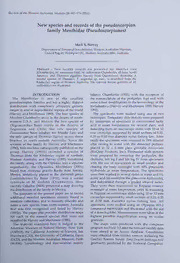
NEW SPECIES AND RECORDS OF THE PSEUDOSCORPION FAMILY MENTHIDAE (PSEUDOSCORPIONES)

The Dancing Floor

The Long Call (Two Rivers, #1)
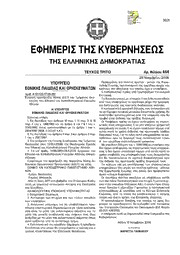
Greek Government Gazette: Part 3, 2006 no. 444
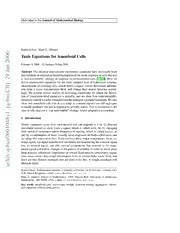
Taxis Equations for Amoeboid Cells
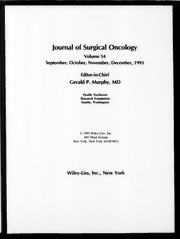
Journal of Surgical Oncology 1993: Vol 54 Table of Contents

Säuglingspflegefibel

alumnidirectoryo00yalerich_bw
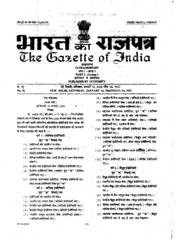
Extraordinary Gazette of India, 2006, No. 477

Trinucleotide Diseases and Instability

Dorothys House Party by Evelyn Raymond

Querido Líder
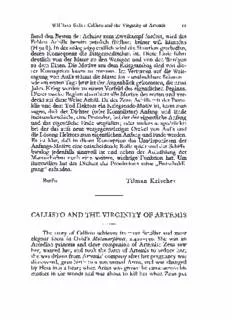
callisto and the virginity of artemis

Guide to condensed interim financial statements – Disclosure checklist

The Life Studies And Works Of Benjamin West Esq by John Galt

Some Spring Days In Iowa by Frederick John Lazell
